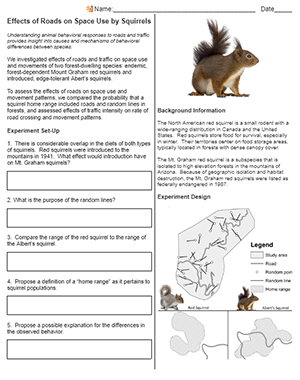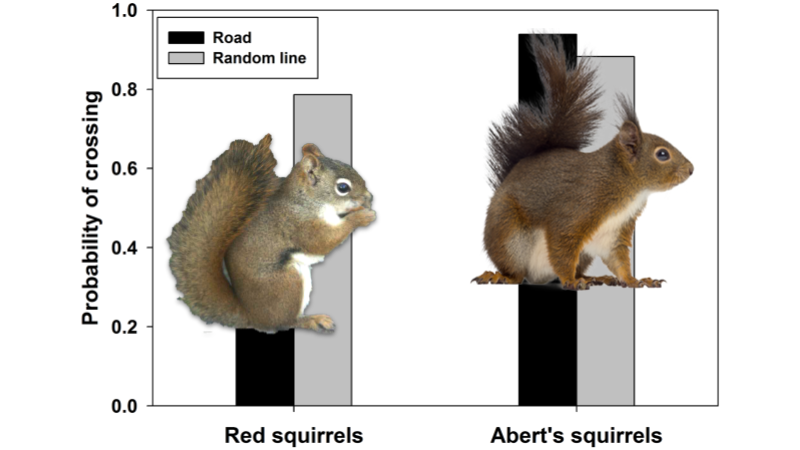
A data analysis on squirrel behavior based on the science journal article. The article explores the behavior of two types of squirrels in response to roads.
The original (native) squirrels, known as the Mt. Graham red squirrel tends to stay in forested regions and avoid the roads. The North American Red Squirrel was introduced in 1987. This squirrel has a broader range that overlaps with roads.
How will interactions between these two species affect their overall populations? Students can infer from the background information and diagrams that competition will occur. If they know about the competitive exclusion principle, they may predict that one squirrel will become extinct. They may also predict that the two squirrels will reduce competition because they have separate niches.
You can also view and print the notes and slides for this unit at Chapter 47: Community Interactions
Squirrel Interactions with Roads
The first diagram shows the ranges of the two squirrels and the location of roads. The study also includes random lines and points to serve as controls. Basically, are the roads and traffic driving the behavior, or would squirrels also react to the random lines. Students use the graphic to analyze the behaviors of the two squirrels and propose explanations.
Students propose a definition for the term “home range” with respect to squirrel populations. Red squirrels have a smaller range than the introduced Abert’s squirrel.

The next graph shows data on the probability of the squirrels crossing the road. The bar graph compares red squirrels to Abert’s squirrels. One bar represents a random line and the other represents the road.
Students then write a CLAIM based on the data shown in the graph. Next, they summarize the EVIDENCE shown in the graph. Finally, they suggest reasons for the differences in behavior of the squirrels. They discuss how these differences can ultimately affect the two populations.

